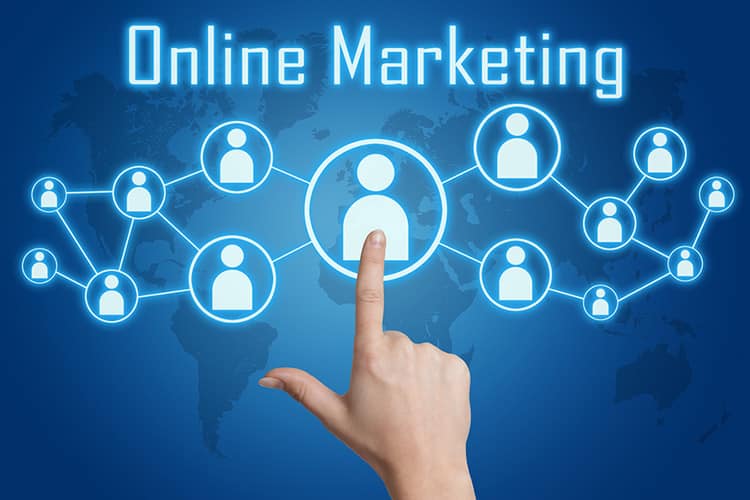Online Marketing or Digital Marketing Strategy depends on multiple factors. To be successful, you have to concentrate on various components of this system. We will see ten major components today and discuss the attention you require to them. Go through other blogs for more freelance tips on improving your online strategy.
- Your Online Presence and mainly Website:
The website is the face of your business on the internet. You may have additional Blogs and Pages created on Social media, and they all constitute to your online presence. As mobile is taking over the laptops and desktops of today’s world, you need to make sure; everything looks perfect on mobile devices; commonly known as responsive websites. They should show your company’s value and should show the latest information and not three years old! Your landing page is most important as it shows your primary services or product.
- Content for your Online Presence:
There are many forms of content for your business, and we will see in short about each type of content and their importance.
- Website content: A website with hardly any content or content with incorrect information is likely to be ignored by visitors. The website should have a minimum but focussed information presented in the correct form.
- Blog Posts: The blog posts are important as they help in driving traffic to your website either with informative or promotional content. They also serve as good sources of backlinks for Search Engine Optimisation (SEO) purpose.
- Newsletters: Subscribing to the newsletter is an over-used digital marketing strategy but once users subscribe to your newsletter, they keep getting updated information every week or every month, and you can engage them.
- Infographics: It is a great way to engage users in your communication and attract them as visuals are always more effective than text. They also play an important role in SEO strategy.
- Email: We will add email or email marketing also to content as it is important to send the correct emails to the right recipients to get effective interaction and leads.
- SEO Strategy:
On-Page SEO is making changes on your website (technical and non-technical) for the search engine to index all your web pages and show your website in search results. Off-Page SEO is all efforts in bringing traffic to your website through other links spread on the network. It includes blogs, Facebook, LinkedIn, Twitter, Instagram and all other Social networking sites. Having a perfect SEO Strategy is most important to maximise the leads.
- Your Online Network:
It is not only your connections on your social media but it also about connections of your website with another internet through inward links. These backlinks generate traffic, and you get the visitors through organic ways of digital marketing using these links.
- Paid Ads:
You can’t ignore paid ads for the simple reason of immediate reach. It may take six months for you to reach on Google Search Result’s first page for specific keywords. You can achieve the same with bidding higher for a paid ad campaign and appearing on the first page. For display ads, you can quickly reach the targeted audience with paid internet ads, and you have multiple options to select the correct audience.
You can choose display ads or search ads; pay per click or pay per view and you can track the success of a paid campaign. You also get immediate results and can count on these ads to meet your goals.
- Managing the Leads:
If you are putting in a lot of efforts and money in generating leads, it is extremely important to follow up and track those leads. For example, the email marketing campaign may generate some interest, and few prospects may reply to the first email. Now if no one replies to them for that email, the entire efforts are a waste. So managing these leads, doing a proper follow-up and converting the leads into business is a critical task.
- Social Media Presence:
Social media is related to your online presence, your online interaction with users, clients, and prospective clients. It is a medium of direct communication with prospects. Apart from that, as you know, it is the off-page SEO strategy (your efforts to bring traffic to your website, which is not related to making changes on your website)
Many Businesses to Business buyers is using Social Media inputs in their decisions to interact with other service providers. Social media can have a lot of positive impact on your brand and creation of your brand.
- Automation of Marketing tools:
It again comes to generating leads, and it may not be possible for your staff to speak to every possible lead if the numbers are in hundreds and thousands. In such situations, automating of tools to respond to every single email or using software like MailChimp to send a thousand emails together is always helpful in reducing manual efforts. You can also make use of outsourcing it as freelance work to reduce the workload of your staff.
- Presence through Video, Presentations:
As the video is most important part of today’s internet world, having a video about your business, your services, your products or testimonials has a greater impact. You can have these videos hosted on your website, or you can have them on YouTube and provide links on your website. Similar to video presence, many people like to see presentations also (which is another form of visuals), especially in the education sector so that you can have presentations about your services on famous presentation or slideshow sites.
- Mobile Marketing:
Last but not the least is Mobile Marketing. Mobile is taking centre stage in digital marketing and reaching to users in all possible ways through their mobile is a must. It includes ads, Apps, in-App purchases (purchase while playing games or using an App) and much more. It has to be a part of your online marketing strategy for 2017 and beyond.
Summary
Online marketing starts with proper planning. It requires you to sit with your internal team or provider discussing details of ‘how and what’ of this strategy. Next stage is proper implementation, and the last stage is follow-ups and conversion of leads to actual business and revenue.



